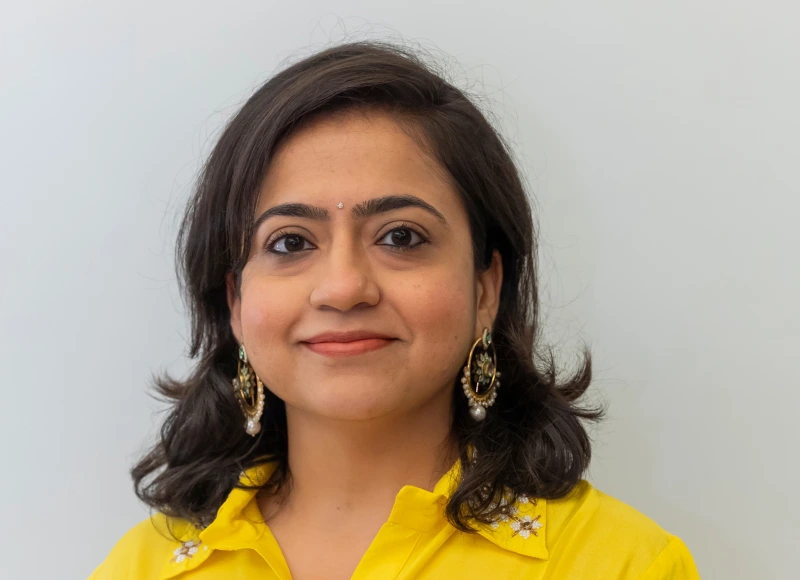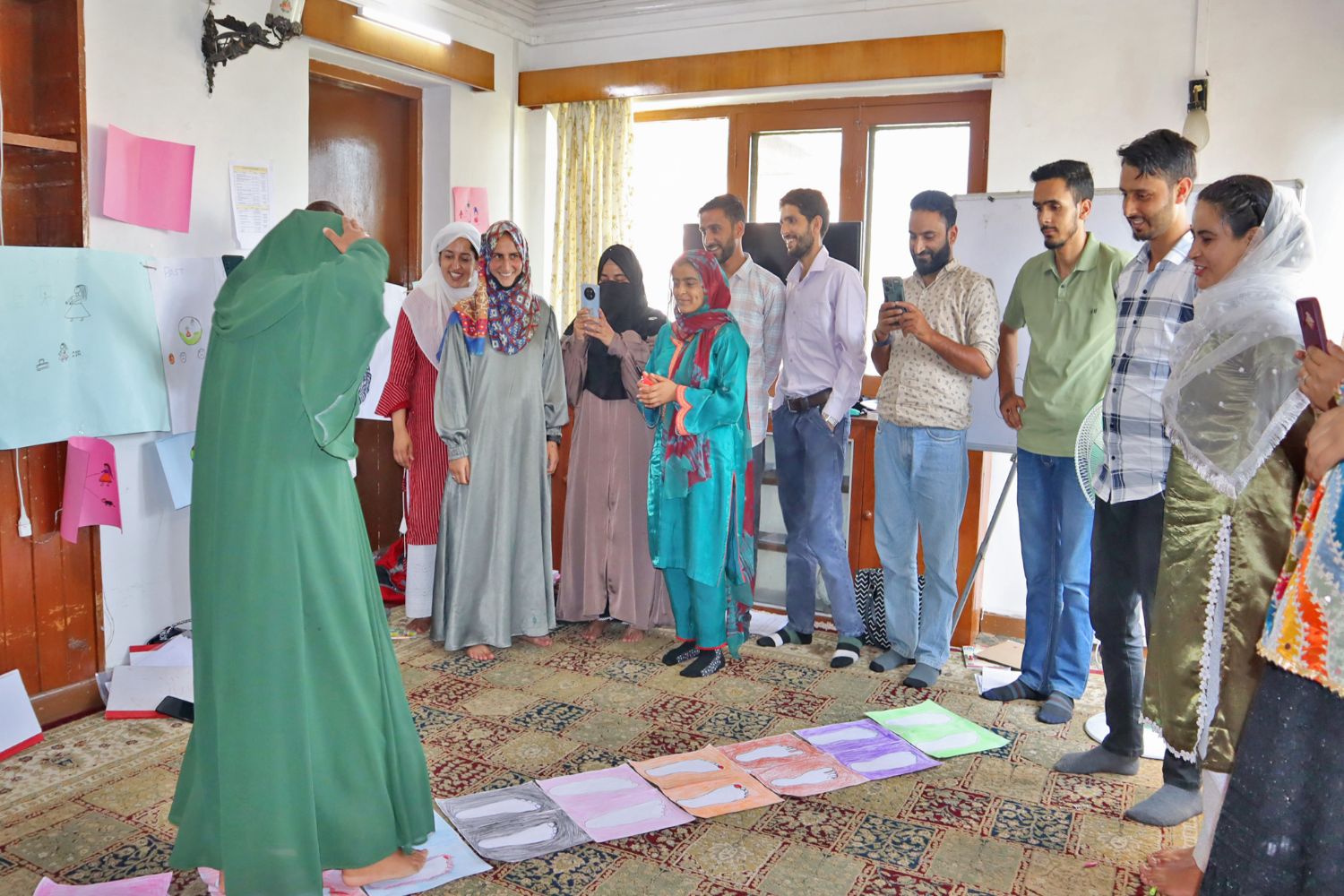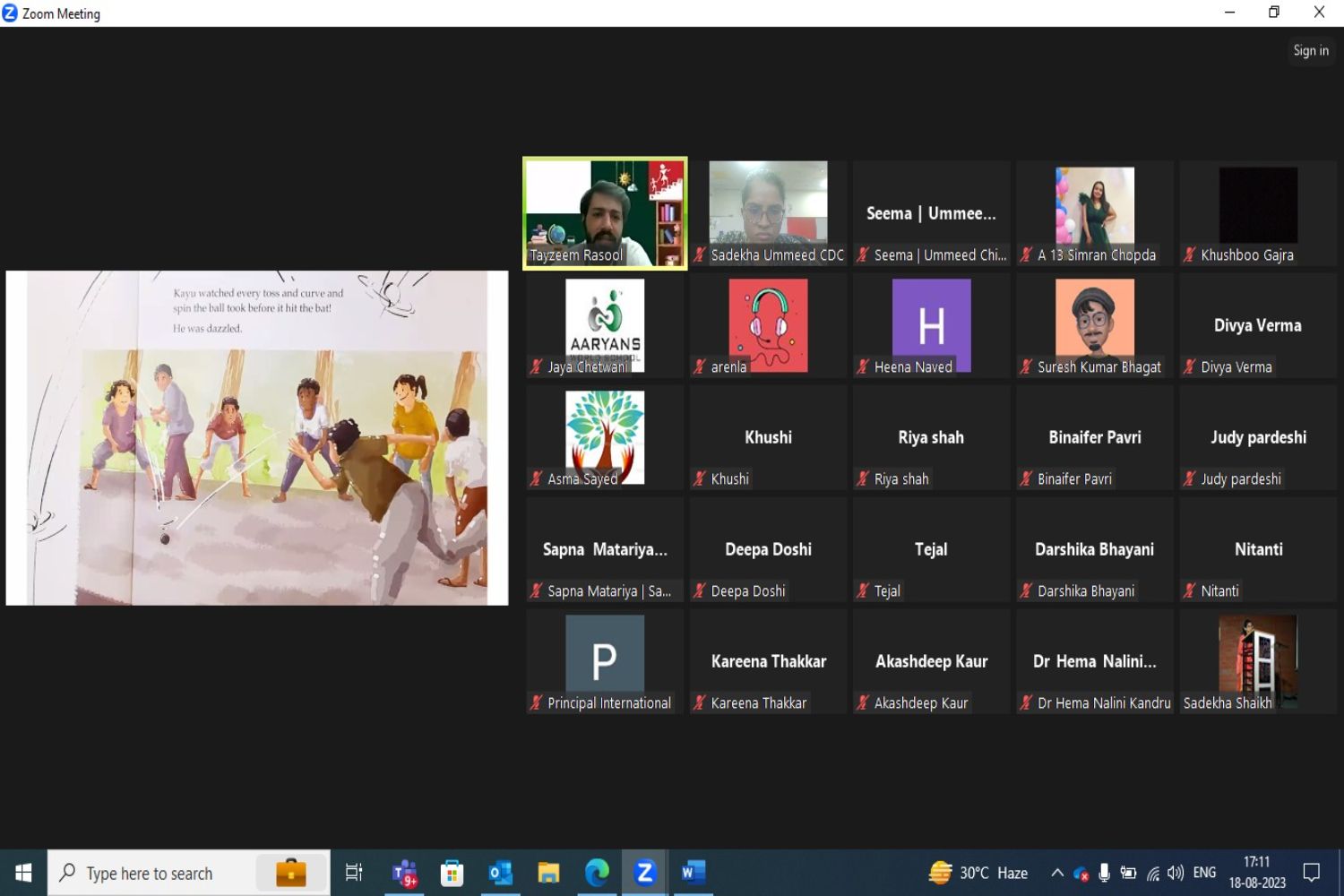Building nonprofit capacities, the Atma way – Diving into the why, what and how of capacity building of small to mid-sized nonprofits in India
The why India’s social issues, rooted in factors like poverty, inequality, a sizable population, and rapid economic development, are both diverse and complex. In the last five years, the National Multidimensional Poverty Index (MPI) recorded a dramatic improvement in poverty between 2015-16 and 2019-21. Approximately 135 million people (13.5 crore) moved out of multidimensional poverty […]

The why
India’s social issues, rooted in factors like poverty, inequality, a sizable population, and rapid economic development, are both diverse and complex. In the last five years, the National Multidimensional Poverty Index (MPI) recorded a dramatic improvement in poverty between 2015-16 and 2019-21. Approximately 135 million people (13.5 crore) moved out of multidimensional poverty during this period. According to data shared by Press Information Bureau, the poverty rate dropped from 24.85% to 14.96%, with rural areas seeing the fastest decline. However, the post-pandemic impact on poverty in India is yet to be fully assessed.
The above is one macro indicator of national progress in tackling the most hard hitting of social problems, poverty. However, there are other indicators of overall progress that raise concerns. In the last five years India’s Global Human Development Index (HDI) ranking has stagnated. This stands at 132 out of 181 countries. This indicates no major progress on life expectancy, expected and mean years of schooling, and gross national income per capita. In the same period, income inequality has gone up. The GINI coefficient has risen from 0.35 to 0.41. This indicates that the gap between the rich and poor is increasing and perpetuating the cycle of poverty.
The regulatory environment has made it harder for NGOs to survive, evidenced by 12,000-14,000 NGOs shutting down in India. This has been due to the tightening of regulations, financial constraints and operational challenges. These indicate a threat to civil society. Solving these issues demands deep, patient and multifaceted approaches targeting root causes. NGOs play a vital role in addressing complex challenges by crafting solutions grounded in a contextual understanding of on-the-ground issues. As of 2023, there are 252,000 registered NGOs in India.
However, poor access to resources, limited team skills and capacities, and a lack of knowledge on organization building in NGOs leads to their inability to thrive and grow their impact. Research shows that NGOs investing in organizational development are able to scale impact faster. However, only 18% of the research survey respondents said they invest adequately in organizational development.
Atma provides customized capacity building support to address these challenges. Our vision is a thriving development sector in India that enables NGOs to sustain and grow. We do this by building the capacity of NGOs by enhancing their knowledge, skills, systems, processes, networks, agency, and access to resources.
The what
Atma’s Theory of Change: A Theory of Change (ToC) is a comprehensive description and illustration of how and why a desired change is expected to happen in a particular context. Atma has adopted the Mighty Ally approach to articulate its theory of change in a concise and compelling manner.
Picture of success – Atma’s graduation goals: The question of what makes an NGO successful in the sector is a big one. Research on the topic tends to be anchored by international bodies and authors, with some evidence of Indian parallels.
One recent piece of Indian research which focuses on what makes NGOs scale, calls out three major factors of success. These are:
- organizational and leadership bandwidth;
- funding, and;
- the ability to attract and retain talent.
Another international research report, focuses on organizational effectiveness (OE) for NGOs. This aims to build on capacities such as strategic planning, leadership transition, Board development and governance, communications planning, and diversity, equity and inclusion.
Atma’s measures of success are grounded in evolving evidence and practice. Over our 16-years long journey, we have constantly refined and updated our metrics of success in order to better build and understand capacity as a concept.
The four graduation goals:
Our current framework focuses on four key areas of organization management. We call these graduation goals. Atma aims to build organizational capacities through its programs in these areas.
The first graduation goal relates to fundraising systems and the donor pipeline. The second one focuses on impact creation and program improvement. The third goal is about people, strategy and leadership. The fourth one centers on organizational capabilities.
Each of these goals has defined focus areas, outputs and outcome measures for us to evaluate success of any OD program. We fundamentally resort to our knowledge, skills and processes framework to measure outcomes for shorter interventions like workshops.
Atma’s TOC
Atma’s TOC follows the Mighty Ally approach. Because many NGOs in India lack the organizational capacity to sustain and grow their impact (Why), we work with small to mid-sized NGOs (Who) to enhance their organizational capabilities (What).
This is achieved through tailored capacity-building programs. These include project partnerships, workshops, the Atma Lab and volunteer engagement (How). The goal is to empower hundreds of NGOs annually to sustainably scale their impact. This is hoped to drive transformative change across the social sector over the next many decades (When).
We ground our work in a clear theory of change. By doing this we ensure that we are able to clearly articulate our outcomes, assumptions, activities and pathways through which we can create meaningful impact in the sector. For more details on Atma’s TOC, feel free to reach out to the author.
The how
Our approach: Atma’s capacity building initiatives broadly fall under five categories. These relate to:
- capacity building programs;
- project partnerships;
- workshops;
- the Atma Lab; and
- volunteer engagement. Our approach may vary depending on the need and intensity of the support being provided in the program. However, for our more intense programs, we follow a standardized approach to the capacity building intervention. There are three key aspects of our approach which are our USPs as a capacity builder.
Tailored support: We offer one-on-one guidance. We help each NGO craft strategies and action plans aligned with their goals for sustainability.
Collaborative: We work with donors and intermediaries as well. The goal is to broaden our reach, and support more NGOs.
Outcomes oriented: We use a review-based approach. The aim is to drive accountability and focus on measurable outcomes.
The effectiveness of a capacity building program rests on several factors. At Atma we ensure a clear step by step process is followed for our structured CB programs. This helps to ensure their relevance to our partners and effectiveness in building core capabilities.
A sample question from the Life Stage Survey (LSS)
Section: Strategy
Sub-section: Vision and plan
Element: Strategy plan
Stage 1: We do not have a set plan of action to achieve our goals, mission and vision.
Stage 2: We have a basic plan of action which is not clearly linked to our larger goals, mission and vision. It does not influence our day-to-day activities or decision-making.
Stage 3: We have a strategy plan that is aligned to our larger goals, vision and mission. It is mostly known and influences our daily activities and decision-making.
Stage 4: We have a strategy plan for the medium and long-term, it aligns well with our overall vision, mission and goals. It is broadly known and influences our programs and decision-making. It includes plans to build future capacity.
Stage 5: We have a strategy plan for the medium and long term. It is broadly known and influences our programs and decision-making. It includes plans to build future capacity. We now need to review our strategy plan to ensure that it is still aligned with the overall vision, mission and goals of our organization.
Step 1 – selection and diagnostic:
The first step in an effective CB intervention is to understand the needs, context and nuances of an NGO’s realities. In our experience, no two NGOs are alike. Even when they struggle through the same challenges, the need for effective solutions requires a deeper understanding of who they are. Through the selection and diagnosis process, we try to understand the leader and organization structure. We try and gain understanding about the models, geographies, interventions and intersectionalities relating to the programs. We also try to build familiarity with the challenges they face across the various OD domains.
At the first stage, this understanding helps us take an informed decision on whether or not we will partner with an organization. We then move into a capacity diagnosis. A tool we often employ to diagnose organizational capacities is Atma’s Life Stage Survey (LSS). This tool encompasses 80+ parameters of organizational health. These span across the 10 OD domains of Atma’s work. These include strategy, programs, monitoring and evaluation, human resources, leadership, fundraising, finance, Board and governance, marketing and communications, and digital. The exercise is done as a self-assessment by the NGO. It is facilitated and guided by the Atma team. In a step-by-step manner, we map out the life stage of 82 parameters across 10 OD areas. This is undertaken in a workshop style facilitation for all NGOs undergoing Atma’s Accelerator Program.
The NGO is provided with an LSS report at the end of the exercise. This report summarizes all aspects of their capacities. It also guides them on the next steps. We have also adapted LSS to the program constructs of other capacity building programs at Atma. Its goal is to assess NGO needs in a leaner and more fit to purpose manner.
Step 2 – creation of OD plans:
We typically encourage the creation of OD plans in the context of a bigger goal. Where does the organization want to be three years from now? What do they want to achieve in the next one year? These goals are focused largely on the communities our partners work with. They serve as anchors to the capacity building process. The question then becomes, for the NGO to effectively achieve these goals, what are the capacities that need to be prioritized in their work with Atma?
Hence, goal setting and prioritization are important aspects of our CB journey. Once done, we create detailed capacity building plans with each NGO partner for the duration of the program. Projects are identified and divided across quarters for each year, and then across years in case of longer programs. This allows for a shared understanding between Atma and the NGO partner. This also enables an effective OD process. We keep certain guidelines in mind during this process. These include the prioritization of needs vs. potential to impact the organization, NGO team size, the bandwidth of the leadership, flexibility in the planning vs. execution, and clarity in outputs and deliverables for each project.
Step 3 – program implementation:
Program implementation starts from the clarity on what is to be achieved with the NGO partner for each capacity to be built. For example, while working with an NGO on strengthening their fundraising systems, a project/ output might be to put into place an annual fundraising strategy. The process of doing this would involve the following steps:
- Kick-off meeting with the NGO.
- Atma shares the fundraising strategy template, which includes several sections like organizational budget, goal setting, SWOT analysis, donor trend analysis, tracking fundraising outputs, etc.
- The partner NGO shares relevant organizational information on their budgets, goals, and current funders, etc.
- Atma conducts a workshop on best practices and guidelines for designing an effective fundraising strategy.
- The NGO and the Atma Consultant work together on putting down the information, and for taking decisions on the fundraising strategy for the organization for the next 12 months.
- A fundraising strategy document for the NGO is ready.
“Atma has been a very strong supporter. It has played a crucial role in Involve’s journey to help us identify the highlights, gaps and opportunities of all the domain areas in the organization. This has given us a complete picture of where we stand.” – Samyak Jain, Co-founder, Involve
NGOs will typically use this to guide their fundraising efforts in that 12-month period. They also use it to engage their Board and share it with prospective donors. However, most importantly, this system/process becomes a part of their annual activities. They start to take this approach to plan fundraising efforts each year and to track their success on efforts vs. only rewards. It streamlines their approach to building relationships in the sector. Thus, they become able to move beyond transactional funding requests to a longer term, more holistic approach to strategic fundraising.
However, this same process repeats 12- 15 times over for each NGO in a year, and that way for a set of 50+ NGOs across the Atma team annually. Atma consultants face some common challenges during project implementation. These range from ensuring bandwidth from the NGO leaders while not pulling them away from the important work they need to do on ground. The objective is to create something contextual for them, which truly brings about change practically, going beyond theoretical frameworks.
“During this quarter, a partner NGO altered the scope of work, leading to the cancellation of one project and the initiation of another. This caused delays in project completion. A key challenge moving forward will be to establish alignment with the partner from the outset concerning any potential changes in scope.” – Anuprita Kelkar, Atma Consultant
How we prepare our team: Atma undertakes its capacity building through a team of internal employees, designated Atma Consultants, who work 1:1 with a set of NGOs. Each consultant comes with a mixed experience set across nonprofits, corporates and OD areas of expertise. For example, they would have typically worked in 1-2 OD areas deeply in the past – like M&E or HR. No one Atma consultant can be an expert in everything, so we hire for expertise in 1-2 areas per team member. We then enable peer learning and sharing to guide the work across OD areas as a team.
Atma also heavily relies on the OD tools, frameworks, guidelines and best practice projects that we have created over the last many years. We constantly update them to keep these relevant. We also contextualize them to the needs of the NGOs. We ground our work in research and management best practices based on reports, studies, articles from credible management schools and organizations, both in India and abroad. Learning and development is prioritized in many ways at Atma. This includes peer learning sessions internally, signing up for courses externally, and learning from mentors. We apply the 70:20:10 L&D model for our own growth and development.
The Atma consultant’s work is reviewed and managed by an experienced senior consultant and/or the lead consultant at Atma. The latter comes with more experience and expertise in capacity building and organization development. Additionally, Atma also relies on skilled experts from both the corporate and nonprofit sectors to volunteer with Atma on pro-bono and part-time basis. This helps fill any gaps in the expertise and understanding of our internal staff members on subject matters like HR, M&E, and financial management, etc.
Every quarter, the Atma consultant plans for projects in the next one. They call out where they need support to deliver on a project. The volunteer manager at Atma then looks to search and select a volunteer who can be mapped to the said consultant to enable them to more effectively support the NGO.
“From thinking about what OD consists of, to deepening the understanding of each area, to actually putting them down in quarterly development focus, Atma’s support has been consistent in making strides.” – Kushal Dattani, Founder-CEO, Samait Shala
At times, there could be a need for an extra pair of hands when team bandwidth is tight. This also goes a long way in us being able to provide such deep support to many NGOs with a lean team. Atma works with ~30 volunteers every year.
Step 4 – reviews and impact measurement:
Capacity is an intangible attribute of a system. Hence, measuring it has been a complex challenge in the field of organization development. However, several studies and research point toward aspects of organizational and individual capacities that drive effective nonprofit operations and growth. We measure these through a combination of quantitative and qualitative factors.
Our approach involves a baseline and endline on organizational maturity and capacities. These are punctuated with regular feedback during the implementation in terms of feedback from NGOs. We try to understand the relevance, timeliness and quality of the project support we offer. We engage deeply with their experience of working with the Atma consultant. We seek and act upon the feedback on the challenges and what could be improved on a quarterly basis.
We also measure the number of projects designed and implemented on a regular basis. We focus on not just creation but also usage in the organization as a program output. Last but not the least, outcomes measured are contextual to the needs of the NGO and the program design.
We identify metrics from our graduation goals framework and/or define a clear picture of success for each of our programs, focusing on what we are trying to achieve with the NGO. These outcomes can be an increase in knowledge on a subject/topic of organizational capacity. An example of this is clarity on how to measure the outcomes of their programs. A relevant outcome may be an increase in abilities of the leader/team, e.g., to better pitch their programs to donors. Another positive impact may be an increase in systems created. For example, they may be able to put into place a field data gathering tool, which allows them to better track their program outcomes.
In the case of long-term interventions, over 24 months, we also track the growth in the number of beneficiaries served, team size and organizational budget. Through a combination and modularized approach, we ensure that while there might not be one standard way of measuring capacity, we commit to clear outcomes at the start, and ensure that they get achieved through our program intervention.
“The volunteer assigned to us this quarter, Aman, had great technical skills in website design. We had no idea about how website content updation worked. However, Aman’s support through Atma helped us do this seamlessly. We want Aman to continue to support our website work in the next quarter as well.” – Haresh Trivedi, Founder Trustee, Vidya Bharti Foundation
Challenges and learnings
Building leadership and staff capacities: We have built an approach that serves the needs of our partner organizations. We focus much more on organizational systems and processes. We have focused much less on the individual aspects of growth and development.
We have not so far consciously either designed for, or measured, change at an individual level. An example of this includes changes in the mindset of the NGO leader.
However, we regularly take feedback from them and seek responses through open ended questions. Through these processes, we have observed that leaders often call out changes in their attitude and mindset, confidence levels, specific skills and transformative experiences, as a result of Atma’s program interventions.
“We were like lost sheep. You (Atma) have brought us to the light.” – Tatyana Dias, CEO, Veruschka Foundation
Harnessing the power of cohorts: Evidence suggests that cohort-based capacity building models are as much a requirement as individualized support. Atma’s default approach stems from a focus on the latter.
However, over the years, we have dabbled with how we can create more peer learning. We have tried to foster NGO to NGO spaces for learning, connections, partnerships and growth through our programs.
We have designed for cohorts in some of our newer program offerings. We can definitely harness the power of cohorts much more proactively with the Accelerator and our alumni base of 100+ NGOs.
Enabling other actors in the ecosystem: One of the major challenges in affecting transformative change for NGOs is in the confluence of multiple success factors that play a role in their growth. These are often beyond the capacity building support being provided by Atma.
What makes an NGO successful is a question we reflect and opine on a regular basis as a team. In our observations, organizational capacities are a critical foundation to building impactful NGOs. However additional actors that play a critical role in this drama are donors, board members, collaborators and regulatory authorities.
Capacity building can only go so far as to set the NGO on a streamlined path to sustainability and growth. However, it needs the horsepower of these other factors to set the NGO up for greater impact and scale.



No approved comments yet. Be the first to comment!